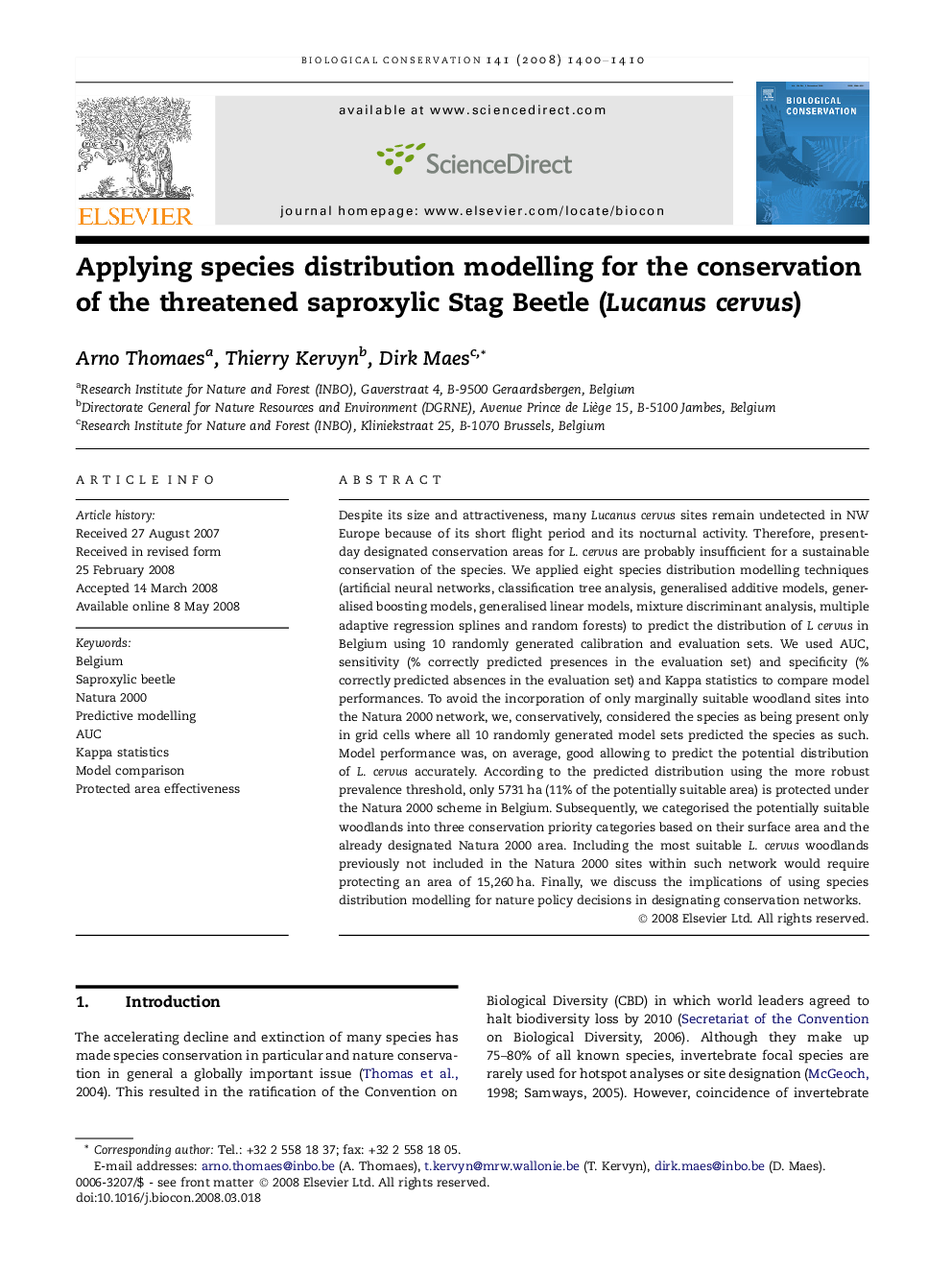| کد مقاله | کد نشریه | سال انتشار | مقاله انگلیسی | نسخه تمام متن |
|---|---|---|---|---|
| 4386961 | 1304583 | 2008 | 11 صفحه PDF | دانلود رایگان |

Despite its size and attractiveness, many Lucanus cervus sites remain undetected in NW Europe because of its short flight period and its nocturnal activity. Therefore, present-day designated conservation areas for L. cervus are probably insufficient for a sustainable conservation of the species. We applied eight species distribution modelling techniques (artificial neural networks, classification tree analysis, generalised additive models, generalised boosting models, generalised linear models, mixture discriminant analysis, multiple adaptive regression splines and random forests) to predict the distribution of L cervus in Belgium using 10 randomly generated calibration and evaluation sets. We used AUC, sensitivity (% correctly predicted presences in the evaluation set) and specificity (% correctly predicted absences in the evaluation set) and Kappa statistics to compare model performances. To avoid the incorporation of only marginally suitable woodland sites into the Natura 2000 network, we, conservatively, considered the species as being present only in grid cells where all 10 randomly generated model sets predicted the species as such. Model performance was, on average, good allowing to predict the potential distribution of L. cervus accurately. According to the predicted distribution using the more robust prevalence threshold, only 5731 ha (11% of the potentially suitable area) is protected under the Natura 2000 scheme in Belgium. Subsequently, we categorised the potentially suitable woodlands into three conservation priority categories based on their surface area and the already designated Natura 2000 area. Including the most suitable L. cervus woodlands previously not included in the Natura 2000 sites within such network would require protecting an area of 15,260 ha. Finally, we discuss the implications of using species distribution modelling for nature policy decisions in designating conservation networks.
Journal: Biological Conservation - Volume 141, Issue 5, May 2008, Pages 1400–1410